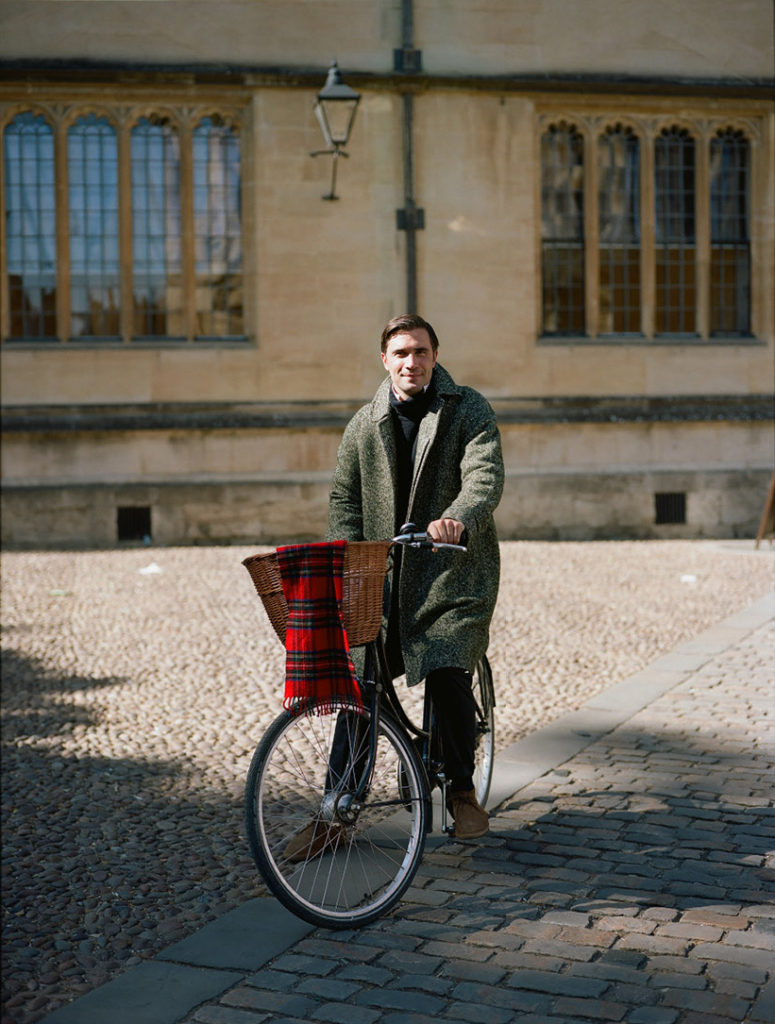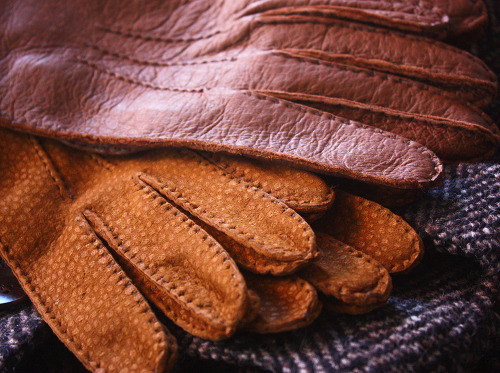
Fall is my favorite season for clothes — the materials are cozier, the outerwear more interesting. But if you’re just starting to build a wardrobe, the costs can be daunting, if only because wool is more expensive than summer’s cottons and linens, and good outerwear can be dearly expensive.
So, here are some tips on how to build a quality fall wardrobe on a budget. Some of these will be familiar to longtime PTO readers, but hopefully they serve as a useful refresher, while also offering something unique to newer readers.
Keep Basics Classic
We’re not sticklers about classic clothing, but it has some clear advantages. For one, it doesn’t cycle in-and-out of trends as easily, so it allows you to build a quality wardrobe over time (rather than having to start anew every season). Secondly, it allows you to wear the same or similar things every day without anyone noticing. Unlike boldly printed shirts or patterned trousers, all-white oxford button-downs and basic jeans can be worn most of the week without anyone thinking you’re using the same pieces twice. This allows you to build a functional, working wardrobe with fewer pieces — which also means you can invest more in each individual item, instead of spreading your wallet thin.
So get some basic t-shirts in white and gray, a few oxford button-downs in light blue and white, and some more casual button-up shirts, such as chambrays and plaid flannels. Few guys couldn’t use a good pair of jeans (if you’re on a budget, mainline Levi’s will do, although Gustin is also good for raw, selvedge denim if you’re OK with the lead times). I find gray cotton sweatshirts around this time of year to be incredibly useful, as well as a pair of brown leather work boots. These alone won’t make for a stylish outfit, but they serve as good building blocks.
Invest in Quality Outerwear and Knitwear
Don’t go fast fashion on the items above, but don’t splurge either (at least if you’re on a budget). Plain jeans, flannels, and sweatshirts can be found almost anywhere, which means you should take advantage of the price competition. For cotton items especially, you can get reasonably well-made items without spending a fortune.
Then use the money you saved on basics and stretch your wallet a little more for outerwear and knitwear. These will make all the difference. You can wear a very simple outfit — a pair of blue jeans with a plaid flannel shirt and some basic sneakers or work boots — but if you have a great coat, you will look tremendous.
Granted, there are ways to save here too. Thrift stores are especially good for classically styled topcoats and vintage leather jackets. But focus more on buying the right piece here — don’t buy something just because it was a good deal. Again, the centerpiece of almost any ensemble tends to be outermost layer. It’s what people see most easily, and what covers up everything else underneath. Which means, if you splurge on outerwear and knitwear, you can often get away with spending little on everything else.

Get Some Practical Accessories
Once the weather turns colder, add a good scarf or pair of gloves. Not only are they practical accessories, they can be a great way to add variety to an outfit. I like scarves to be slightly generously sized — about 70″ in length and 20″ in width, depending on the material. J. Crew has scarves this size for under $50 nowadays (use one of their many coupon codes) and don’t forget to scour sites such as Yoox for deals. Scarves are one of those things where quality should be self-evident. If it looks and feels good, it is good.
Stick to a Simple Color Palette
Slightly more unusual colors, such as burgundy and burnt ochre, can be great this time of year — even for larger pieces such as outerwear. But when you’re building a smaller wardrobe, picking up something in an unusual color may lead you to having to pick up more things to match just that one item. A burgundy duffle coat can send you looking for the right black sweater and washed chambray shirt — and those items then lead you looking for more matching outerwear. Suddenly, you find you’ve spent much more than you intended.
Instead, stick to a simple and consistent color palette. Most men will find this to be in gray, brown, and blues — varying shades thereof — which can be mixed-and-matched endlessly to create any number of outfits. Wearing clothes in this way, however, can start to feel boring after a while. So, switch things up with textures instead of patterns or colors. A navy sweater in a spongy Shetland will look a lot different from a smoother, plainer merino. A pair of gray trousers in woolen flannel or mottled whipcord will look more distinctive than basic chinos. In this way, you can still have your smaller wardrobe, and ease of dressing in the morning, but you can also have a bit of variety when you want to switch things up.
Focus on Fit and Silhouette
This should be obvious, but always focus on fit and silhouette — the two are not the same. Fit in men’s clothing follows some basic guidelines. The collar on a jacket should hug your neck; your clothes shouldn’t be pulling anywhere. But once you get beyond the basics of fit, think more about how your clothes are coming together to form an overall shape (we have guides on how to read silhouettes in tailored clothing and casualwear).
These days, I like a slightly looser top with slim trousers. I often order sweaters one size up from what I’m used to wearing, and go for coats that have a rounder, slouchier look. Obviously, this is all up to taste, but I find looser sweaters and topcoats can make an outfit look more comfortable and relaxed — two cornerstones of style — while the slimmer trousers help keep an outfit from seeming sloppy. Even if you’re building a smaller, budget-minded wardrobe, don’t be afraid to experiment a little.
(photo via Drake’s)







